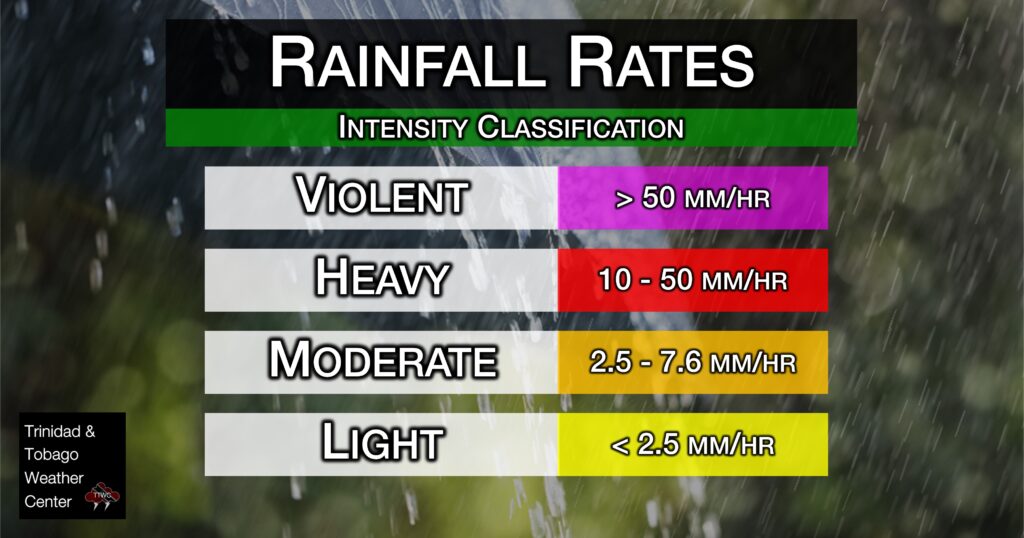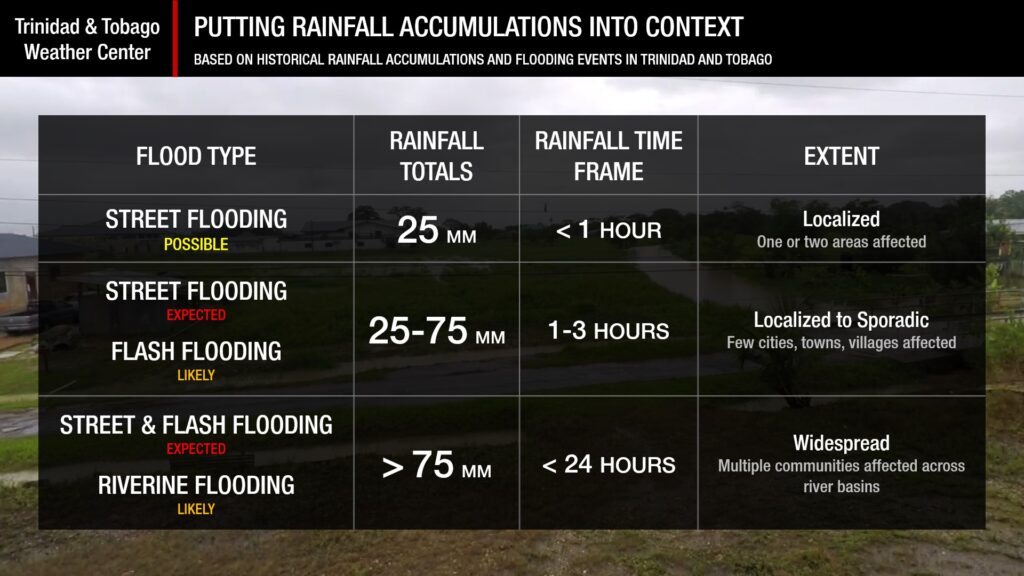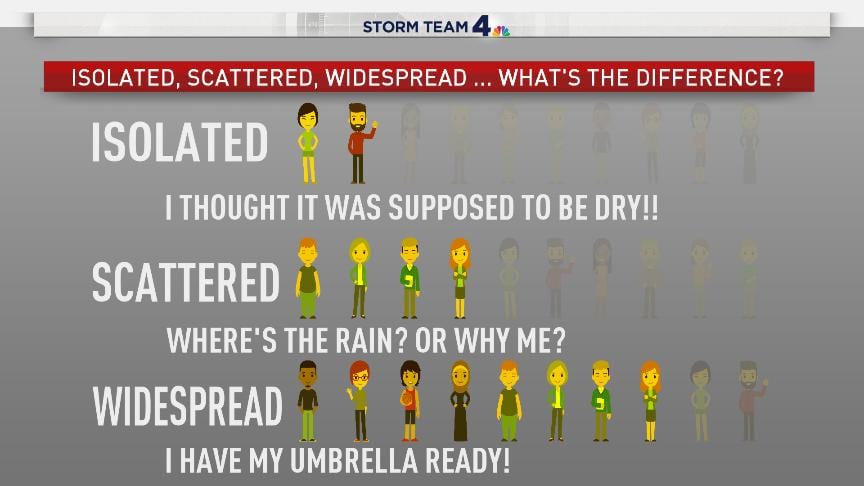The country has already seen an unusually wet start to 2025, with Crown Point having its wettest start to the year since 1980, accumulating 79.6 millimeters of rainfall through 2:00 AM on January 3rd. For January, Crown Point usually records 81.8 millimeters of precipitation for the entire month, based on 1991-2020 averages. While Piarco recorded a paltry 33 millimeters through 2:00 AM on January 3rd, elsewhere across Trinidad, there was between 25 and 50 millimeters of rainfall, with isolated totals of up to 125 millimeters in southern and eastern areas.

Though conditions are not forecast to be as favorable as they have been through January 3rd, anomalously moist air is forecast to stay around this weekend and the first half of next week, with occasional showers and light to moderate rain in the forecast for Trinidad and Tobago.
What you need to know
— Rainfall: Over the next five days, through January 7th, overall rainfall accumulations across the country are forecast to range between 15 and 35 millimeters, with isolated totals between 25 and 75 millimeters, favoring predominantly eastern Trinidad.
— Saharan Dust: Mild to moderate Saharan Dust concentrations are likely from Friday night through Sunday.
— Hazards: Due to saturated soils, elevated major river levels, and additional forecast rainfall, the main hazards will be landslides in elevated areas and localized ponding/street/flash flooding in heavy downpours. Minor to moderate riverine flooding is also possible across Trinidad, particularly in eastern areas.
— Marine: Seas are forecast to be moderate in open waters through the forecast period, with waves up to 2.0 meters. In sheltered areas, waves are forecast to be up to 1.0 meters. However, long-period swells are forecast from Saturday, leading to larger than usual waves in northern and northeastern nearshore areas.
Latest Alerts
TTMS Issues Adverse Weather Alert For T&T
Trinidad and Tobago is NOT under any tropical storm or hurricane threat, watch, or warning at this time.
The Forecast
Friday
FridaySaturday
SaturdaySunday
SundayMonday
MondayTuesday
TuesdayMarine Forecast
Slight to Moderate Seas Forecast For T&T
Temperatures
Friday
Low: 23-24°C
High: 27-29°C
Saturday
Low: 23-24°C
High: 29-31°C
Sunday
Low: 23-24°C
High: 28-30°C
Monday
Low: 23-24°C
High: 30-32°C
Tuesday
Low: 23-24°C
High: 30-32°C
Forecast Impacts
Flooding
Over the next five days, through January 7th, overall rainfall accumulations across the country are forecast to range between 15 and 35 millimeters, with isolated totals between 25 and 75 millimeters, favoring predominantly eastern Trinidad.
Street & Flash Flooding
Street & Flash FloodingRiverine Flooding
Riverine FloodingForecast Rainfall Totals
- Friday: Between 10 and 25 millimeters of rainfall across both islands, with isolated higher amounts favoring Trinidad.
- Saturday: Between 0 and 5 millimeters of rainfall across both islands, with isolated totals up to 20 millimeters favoring eastern Trinidad.
- Sunday: Between 5 and 15 millimeters of rainfall across both islands, with isolated higher amounts favoring Trinidad, particularly the southern and eastern halves of the island.
- Monday: Between 0 and 5 millimeters of rainfall across both islands, with isolated totals up to 15 millimeters favoring eastern Trinidad.
- Wednesday: Between 0 and 5 millimeters of rainfall across both islands.

Understanding Rainfall Accumulations
Putting the rainfall forecast into context, rainfall rates in excess of 50 millimeters per hour or areas that receive in excess of 25 millimeters within an hour tend to trigger street flooding across the country or flash flooding in northern Trinidad. For riverine flooding to occur, a large area of the country (not just in highly localized areas of western coastal Trinidad) would have to record upwards of 75 millimeters within 24 hours, and rainfall would have to fall across major rivers’ catchment areas.

Strong Thunderstorms
Strong ThunderstormsWhat is a strong or severe thunderstorm?
Given how rare these types of thunderstorms are in our region – we classify a severe or strong thunderstorm as one that produces any of the following:
- Damaging wind gusts exceeding 63 KM/H;
- Frequent lightning (more than 30 cloud-to-ground strikes within a 10-minute period);
- Hail (of any size);
- Rainfall of more than 50 millimeters or more within an hour or exceeding 75 millimeters or more within three hours;
- The sighting of a funnel cloud or touchdown of a waterspout/tornado associated with the thunderstorm.
Gusty Winds
Gusty WindsWith winds gusting to 45 KM/H, whole trees can be in motion, with larger trees and weaker branches falling. Light outdoor objects can topple or become airborne, such as garbage cans, loose galvanize, construction material, and outdoor furniture. Tents may also jump.
Other Hazards
Saharan Dust Forecast
Dust-Free Days Ahead For T&T As Saharan Dust Stays North
Why I May Not/Will Not See Rainfall?
A frequent complaint is the forecast is wrong because I didn’t experience any rainfall. Scattered showers mean that you, individually, may experience some showers intermittently throughout the day, and there is a higher chance for this activity than isolated activity. Widespread showers mean that nearly all persons and areas may experience rainfall.
Isolated to scattered rainfall is forecast on Friday and Sunday, with isolated rainfall on all other days.













